The Huston Crafted Series brings you a little closer to the world of textile design and making as we highlight the hidden details that go into producing our collection of premium cloth, running the creative gamut from knits to woven goods. At Huston, we restore and empower a heritage of fiber craft through a truly artisan American textile making experience. In this first edition of the series, we look through a few of our favorite custom denim artisan textiles, and some of the process it takes to create them at our domestic mill. Lets dive in at our denim fabric and process favorites – our 12oz Double Slub, a 14oz Botanical Indigo and a 10oz Natural denim – lets explore !
As a denim is brought to life, the design process of material selection and machinery selection is paramount. When we consider a denim project on our looms – these are the key points to consider for a beautiful product without too much waste. At Houston Textile Co, we take great pride in our denim weaving process. We source the highest quality raw materials to ensure that every piece of denim fabric is crafted with attention to detail and excellence.
The most important details to constructing a denim textile with us include:
Once we have a sample yarn and prototyped construction of a test swatch (before larger productions), we can further tweak the variables.
Cotton comes in many shapes, sizes and colors! A variety of cotton genetics are grown domestically, from California to West Texas, and beyond. While some varieties are adapted to specific regions, others can be grown across the country. Cotton is an incredibly versatile fiber that can be used for a variety of purposes. From clothing to linens, cotton provides comfort and strength that lasts which is also why it has always found utilitarian value in denim textiles.
Denim is a sturdy cotton warp-faced textile in which the weft passes under two or more warp threads. This twill weaving produces a diagonal ribbing that distinguishes it from canvas, and often makes it a stronger construction for utilitarian toughness. The main difference between denim and canvas is the weave construction. Canvas is made with a simple plain weave pattern of “over one, under one”. (*Using two yarns in the over under instead of one, but it is still a plain weave, is often referred to as ‘double fill’).
Construction of denim twill fabrics are made by going over one yarn and under two yarns or even under three yarns. The weave is shifted over in each row creating a diagonal line in the pattern. The diagonal line makes a twill easy to identify and can make the fabric more durable than plain weave. It also increases the dyeing capacity and makes it less likely to fray or tear. Denim twill fabrics are used widely in making jeans, jackets, shirts and accessories like hats and bags.
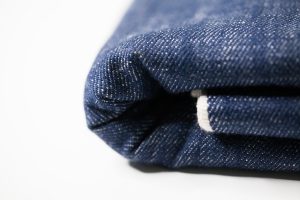
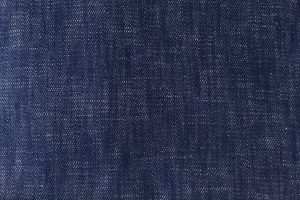

Denim is available in a range of colors, but the most common denim is indigo denim in which the warp thread is dyed while the weft thread is left white. As a result of the warp-faced twill weaving, one side of the textile is dominated by the blue warp threads and the other side is dominated by the white weft threads. Modern day denims fabricated from this cloth are thus predominantly white on the inside.
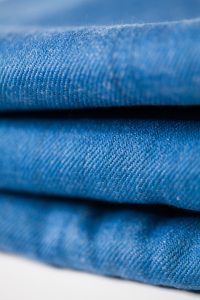
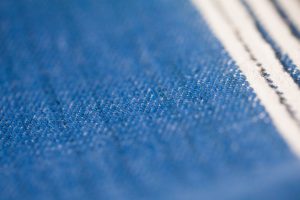
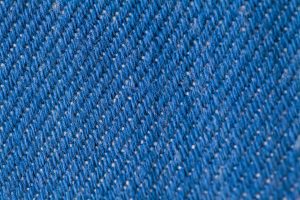
Custom vintage denim textiles can be manufactured using a variety of equipment, producing textiles that can vary in thickness and weight with a yard of fabric weighing anywhere from 9 to 32 oz, with 9 to 14 oz being typical range used in consumer apparel and accessory goods. Our looms are capable of heavy denims, however not ‘bull denims’ which usually push past 15oz fabric weight constructions and require more specialized machinery.
Although not always the case, shuttle-loom-woven denim is typically recognizable by density, and by its selvedge, the edge of a fabric created as a continuous cross-yarn (the weft) reverses direction at the edge side of the shuttle loom. The selvedge is traditionally accentuated with warp threads of one or more contrasting colors, which can serve as an identifying mark.
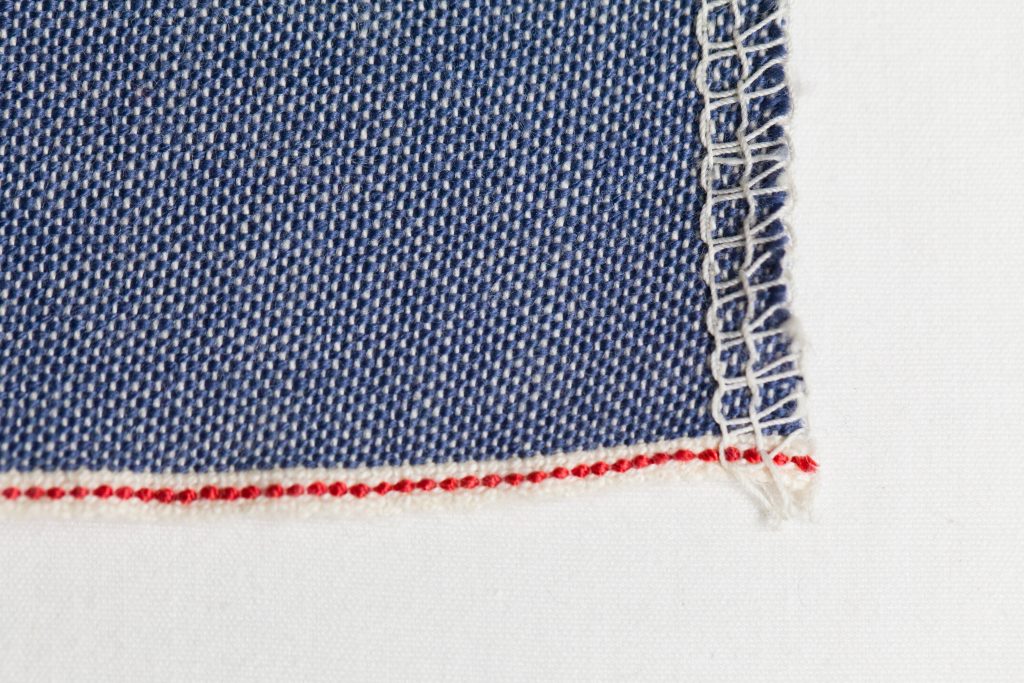
Selvedge, or selvage, came from 'self-edge' and is most commonly referred to as ‘Redline.’ Selvedge is the narrow tightly woven band on either edge of the denim fabric, parallel to the warp.
A selvedge end prevents the edge of the denim from unraveling. In some fabrics selvages are closed, whereas on larger modern weaving machines, the weft yarn is cut on every pick, creating what is called a ‘fringe’ selvage.
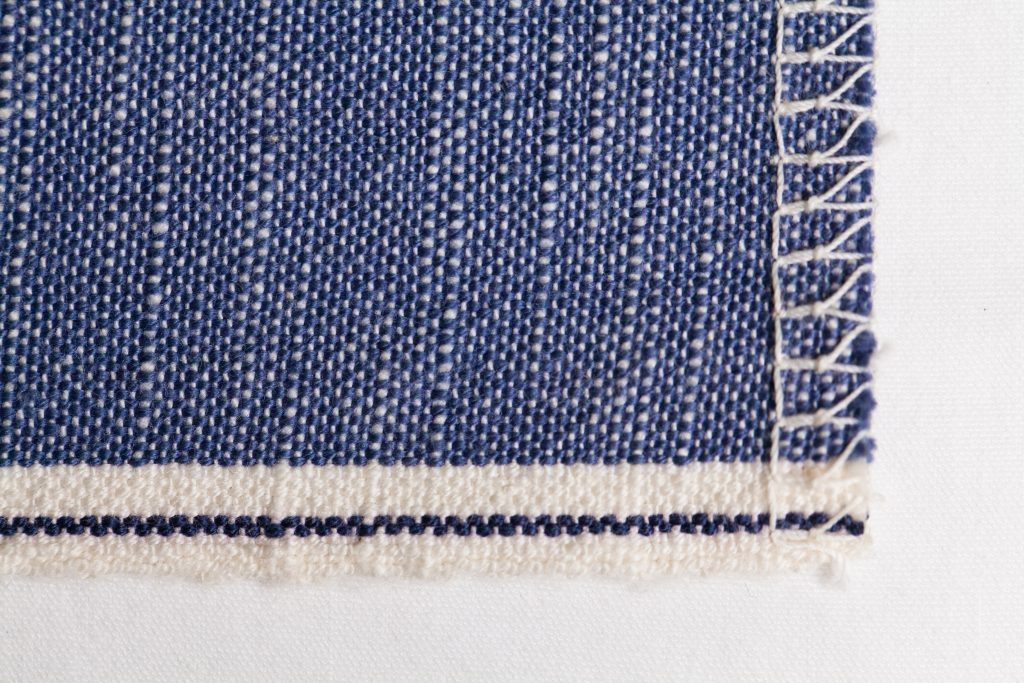
If you’re looking for a little inspiration or simply want to expand your fabric knowledge, check back often as we are adding expanding content monthly. We’d also love to hear your feedback with what you’d like us to produce and share next – please send us an email or give us a call to talk about your any of your custom denim artisan textile needs!
Kali Made Garments is making a name for itself in the California apparel scene. Founded by Bay Area native, Victor Kali, this locally-made bespoke men's brand prides itself on small batch, luxury staples for the conscious clothing wearer. We sat down with Victor, at his downtown Oakland home, to tap into his inspirations, creative design rhythm and to learn more about his love affair with the Bay.
Your Full Name:
Victor Manoa Kali
Your favorite food:
Burritos
Where were you raised?
South San Francisco and Millbrae, to be exact.
Something interesting that we might not know about you.
I’m a huge basketball fan and have been playing and watching as long as I can remember. My first job was actually working at a kids basketball camp, which used the game to not just teach athletic skills, but also how to be a complete and healthy person with respect for the world around you and all the people in it. I also work pretty closely with the local artist community in Oakland, and like helping out with shows, events etc to support the artists on a personal and ground level so they can continue to pursue their dreams like I do mine.
What prompted you to start a men’s clothing line?
I was always interested in clothing and it’s ability to inspire and affect people’s feelings about their surroundings. Growing up, my garments were a way for me to personally feel more confident and secure. After learning the ropes of the corporate fashion system, I decided to start my own brand more in line with my values. I think timeless pieces that age gracefully and mature with a person are the most valuable; they allow for confidence to become a more internal, natural development rather than relying on the need for outside gratification that is all to prevalent in our current society.
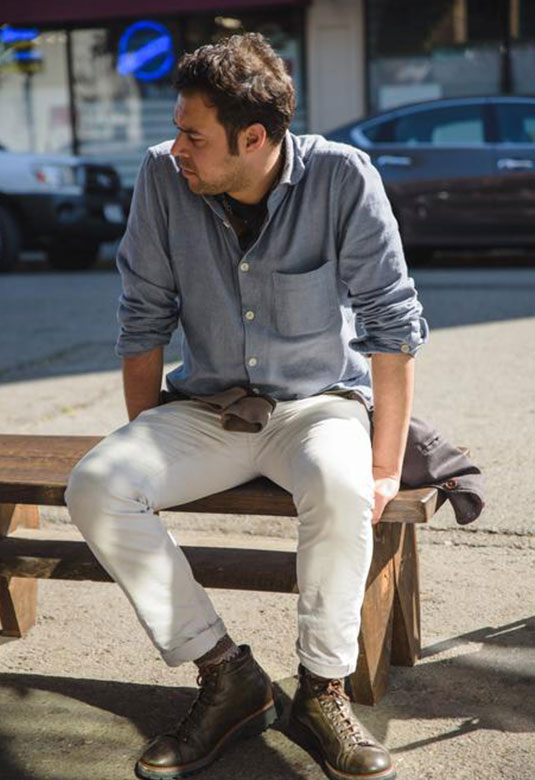
Tell us more behind the “Kali Made” name and why you decide to produce locally in the Bay.
Well, I’m not the most creative person when it comes to marketing and branding, so I just decided to use my own name for the brand! Kali is obviously my last name, and I make garments, but I also want the brand to represent the lifestyle and culture I grew up in in the Bay Area. California is a very inclusionary and unique place - Kali Made is a representation of my pride for our special place in the world. I decided to produce in the Bay for a few reasons - I have a pretty free flowing creative process, so it really helps to be close to the production facilities to make sure everything gets made to the highest level of quality, and I can iterate and make decisions with more freedom. I also wanted to keep my investments in the community I live in. And from an environmental standpoint, keeping the production pipeline as local as possible greatly reduces my reliance on traditional shipping and production processes which contribute to “soft” consumption of resources through the pipeline.
Who do you design your clothing for?
I hope my garments appeal to a customer who is less interested in being fashionable and more inspired by presenting a conscience and considered persona. I don’t make clothes to stand out, really. My ideal customer is quietly confident in themselves and what they stand for, and isn’t afraid to live their own best life, whatever that means.
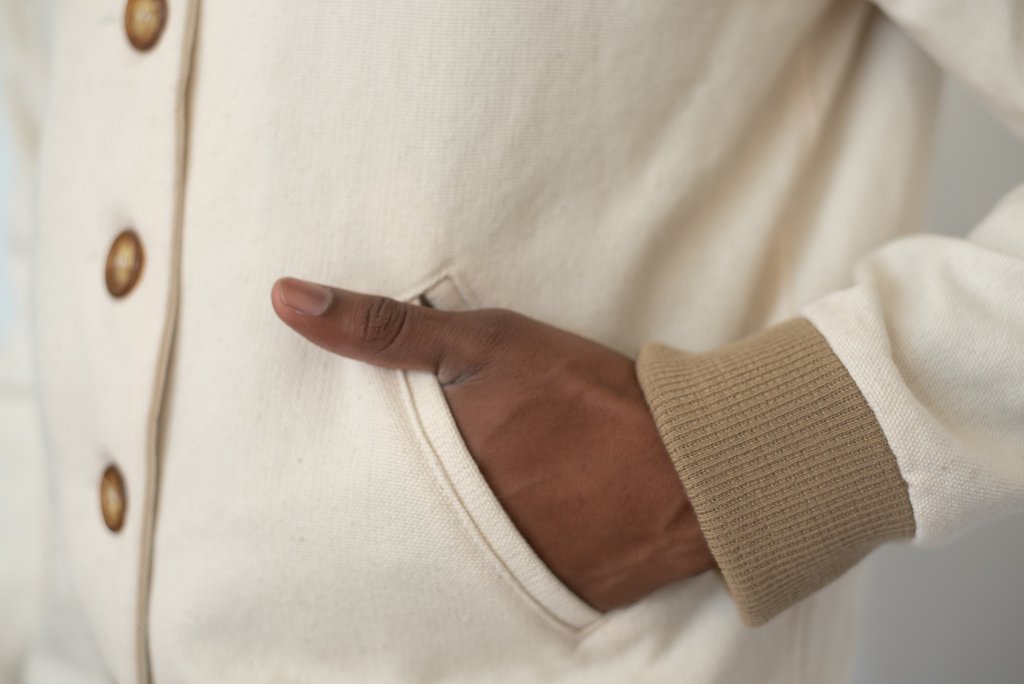
You integrate elements of sustainability into your work. Can you tell us more about that and why it is important to you?
The move toward sustainability isn’t really a choice we have any more. It’s an almost moral question we have to reckon with as a civilization built on mass consumption, that we have to live and create in ways that are better for our internal and external environment. I’m not mad at how we have developed to gain gratification from our current consumption patterns, but we have to figure out how to be a more responsible and thoughtful society overall. I definitely don’t have all the answers, but I hope to at least be asking the right questions.
What was your first encounter with the Huston Textile Co.?
A few years ago I saw on social media that a small local shirt maker had made a piece with some local textiles. I’m a bit of a fabric and production nerd, so this made me really excited. I looked up Huston Textile and gave Ryan a call. The next week I drove out to meet him and see his shuttle loom, and it was awesome! I felt like I’d met a kindred soul - until then I didn’t really know anybody else passionate about heritage quality textiles, especially in the US. The fabric itself is amazing, and seeing how him and Kat have grown this local fabric community into a little family is super inspiring.


What is your favorite piece of clothing that you’ve developed?
Well, I really like my Universal Track Jacket, as an everyday wearable heritage piece that works on tons of different people, styles, body types, etc. It was nice to put my own little luxurious twist on a pretty classic silhouette. I love seeing what people react to what fabrics and combinations - it’s all about what I hope makes people happy and confident in themselves. The fact that people from all walks of life have reacted positively to this style makes me really happy and makes me feel like I’m helping grow a tight little community in its own right.
How do you choose the textiles you work with?
Quality and a good hand feel are my topmost priority when choosing textiles. I want my garments to have a very tactile quality to them, so even if you don’t see them per se, when you are wearing them you can definitely feel them. I tend to gravitate toward heavy soft cottons and finer wools. Being able to layer your pieces is a huge part of my style and life in the Bay Area, so versatility is kind of ingrained in my psyche at this point. I also like the idea of mixing and matching fabrics and styles in unconventional ways, like using an indigo dyed Italian denim for a sport coat, or a fine tuxedo style wool crepe for a more casual track jacket.
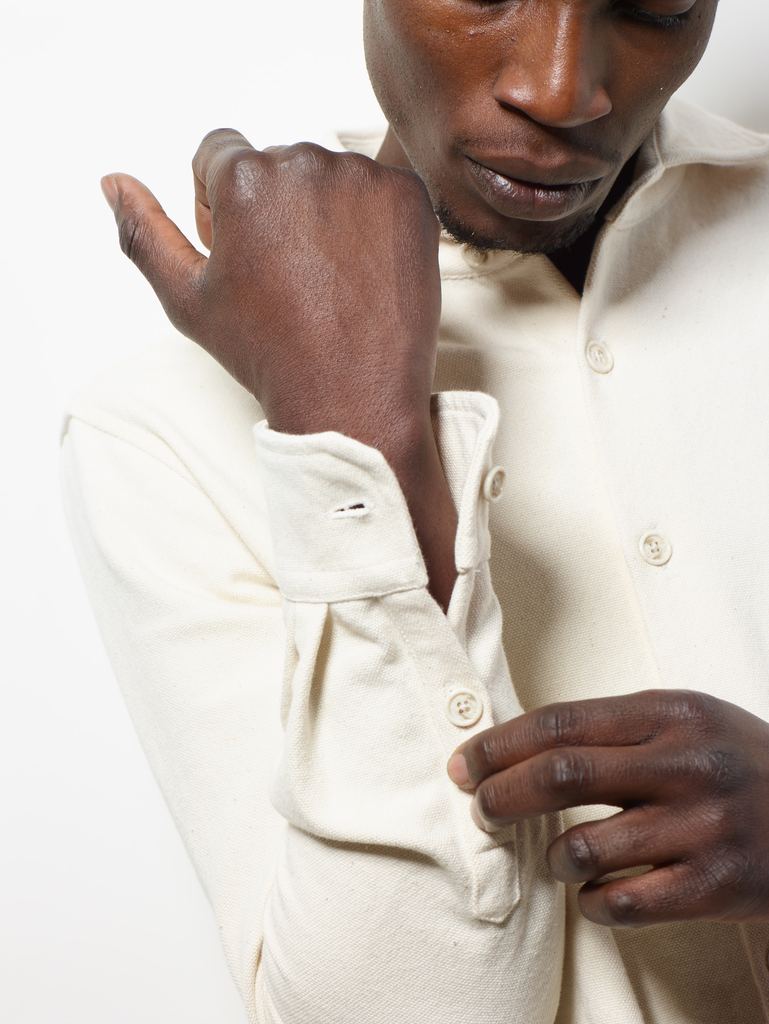
Your bespoke clothing has influenced many people in the Bay Area. Have you dressed anyone we would know of?
My friend Boots Riley is an activist, artist, and now successful film director who has really been rocking my stuff lately! He made this wild social commentary (and hilarious) film “Sorry To Bother You”. We were already friends from the Oakland scene, and seeing his latest successes in a new field have been amazing. Also my buddy Nate from the band Tune Yards likes to rock his Kali Made Garments jacket on tour - I’m glad my garments get to see the world!
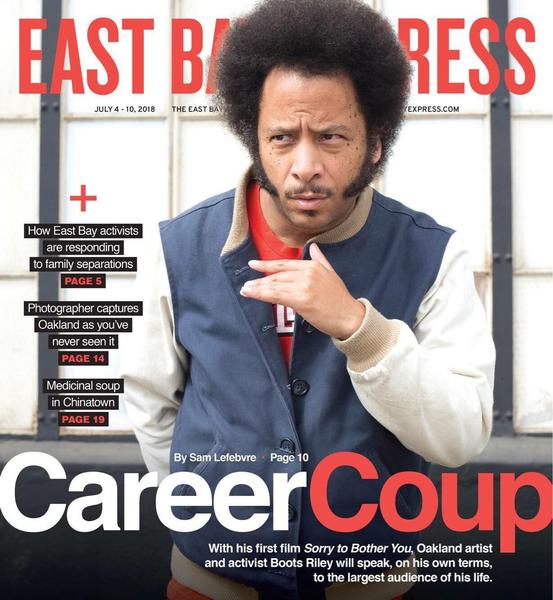
What does the future of Kali Made look like?
Just keep moving forward, one collection at a time! Ideally I would love to establish a more consistent direct sales business, so I can keep working with Huston and my local factories and exploring new styles that keep me excited as a designer. I’ve got a few new tricks coming down the pipeline - I think the next step for Kali Made Garments is to start expanding my own horizons and creating pieces that are a bit more unique but still in line with my core concepts for the brand.
Where can we find your collection?
Online at kalimade.com has the complete assortment. I have limited collections in a few boutiques in the Bay Area, like Viscera boutique in Oakland and Hapertas and Co. in San Jose.
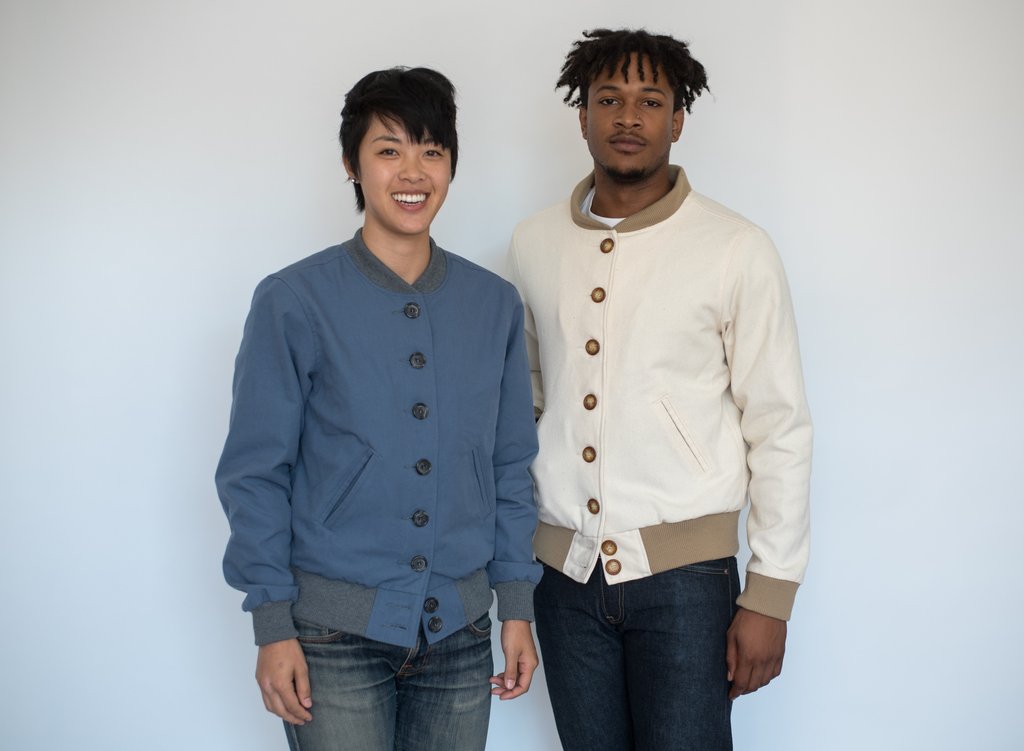
Anything else you’d like to add?
Just want to say thank you to everyone I’ve had the pleasure of working with or supported Kali Made Garments in any way, from picking up a piece or just showing love for new styles. I have to remind myself sometimes that I started the brand to bring my little piece of beauty and joy into the world, and every day that I get to keep Kali Made Garments moving forward is an immense honor and pleasure.
images by mrkrbnsk@gmail, @urbanm11
A man of many talents and history to be proud of, in this feature piece, we throw ten questions at Founder, Chief Engineer and Operations Officer - Mr. Ryan Huston.
Where are you from and what shaped you as a young man to pursue your path?
Although my lineage is rooted in Coloma, the origins of the California gold rush, my family headed for Utah when I was a small child. Every summer my maternal grandparents, Bill and Sally Jones, would take their Lincoln town car to Salt Lake, Utah and ride back to Sacramento with me, my sister and brothers in tow. Our adventurous road trips led us to some of California’s most majestic landmarks: from the lush redwoods of the Santa Cruz highway to the salty air of Monterey Bay and the wildflower bloom of the Sierra Nevada foothills. To me, California was a childhood utopia that provided me with a sense of civic duty, lessons in repair and woodworking, and cannonballs in the Hagan community swimming pool.
What inspired you to start this business?
My family. My grandparents whose courage in their lives have given me so much and will forever be imprinted in this business among other ways, through their support to purchase our first two commercial looms. My mother, whose passion for textiles has kept me around fabrics from an early age and whose dedication to her craft always gives me pride to now apply in my business.
My children. In 2012, we had our first child Hazel. My wife Kat and I found ourselves looking for a 'swaddle' that was made domestically from responsible materials, finding none suitable and deciding to make our own and sell them as well - we saw a business. From that moment on, we've grown in our skills, and infrastructure - originally using hand looms, to now having restored iconic power shuttle looms, textile preparatory equipment and state of the art technologies to produce and keep up with a quickly modernizing industry - never a dull day for our small business.
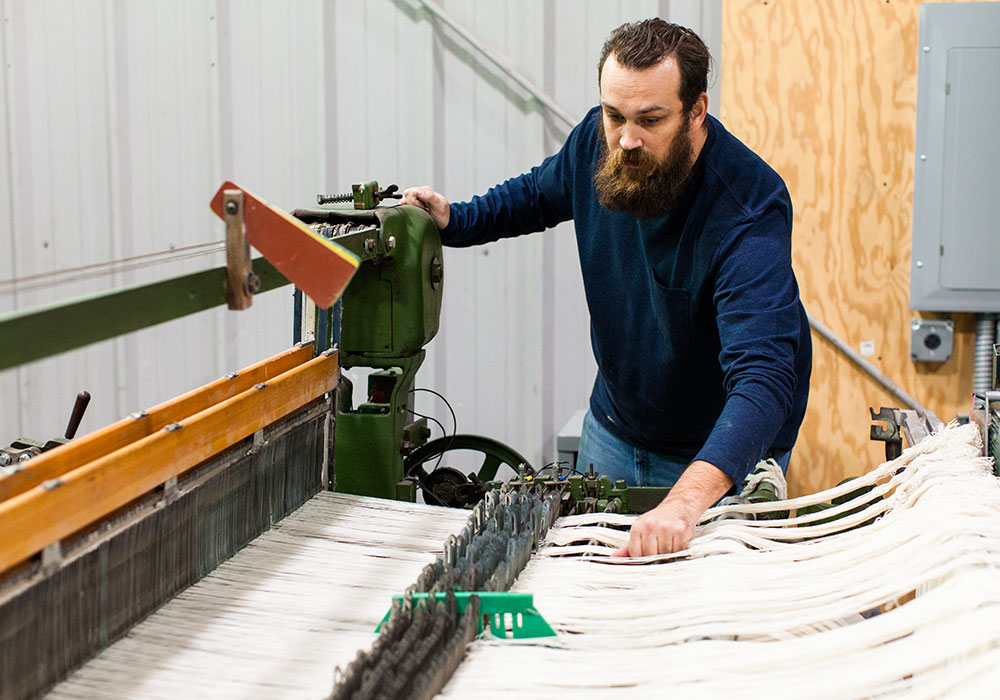
What skillsets didn't you have starting this business?
Aside from no technical training in textiles or my first industrial machines, I studied electronic and electrical engineering prior to my life in textiles. Originally on the path toward computer science, I even won a robotics competition that sparked the move toward engineering. I now see the field of mechatronics, where I get to include all my engineering, computer science and design experience with textiles, to a modernization plan.
What do most people not know about you?
Few know that my first name is really Douglas, the signature of a long standing family tradition of taking ones middle name rather than their first.
What do most people not know about your business?
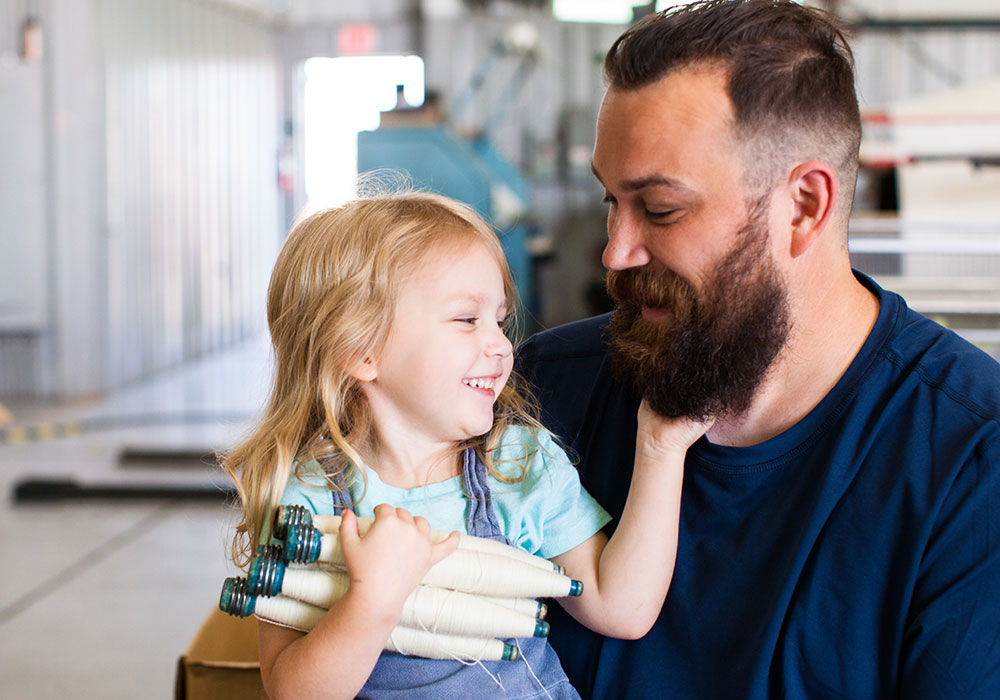
What's your favorite part of being an entrepreneur?
I've loved working with my family and community to build unique, innovate, and ultimately heirloom products. The logistical and engineering problems that I encounter are always putting my skills to the test. Interacting with iconic machinery and developing systems for regional fiber applications has been a thrill - always something new in my role as Founder and Chief Engineer that twists my brain and helps me balance practicals with innovations.
Favorite fabric(s) you've ever made? Why?
Ive always loved the utilitarian fabrics made on our Draper x3 - affectionately named 'Blue Dot' - especially the mid-weight, strong, shirting material. It's one of my favorites because of the functionality and versatility designers find use for it in.
What are your hobbies outside of textiles?
Ive always loved the outdoors - whether I am fishing in the Pacific ocean from a kayak with my brother, taking a four wheel adventure with my kids in the National Parks, or training my new hunting dog - anything outside will be good by me.
5. Nature / Stewardship through fiber and textile making?
What skills and perspective did you gain from your time in the military?
In my training, and deployment to Iraq, I learned a lot as a young man. From the ground up - I became a better man as I fought alongside my brothers and sisters. We had hard days - and protected each other and our country in a time of need.
What is your design philosophy? (Aeon/waste)
More than not, I am not thinking about any one step, but an entire process. Circular, from materials to machinery to man power
What is your business philosophy?
I started the business with hope that triple bottom line economics would prevail.
How did you learn to work with textiles and repair textile machinery?
How did your experiences in the military inform the founding a truly American made company like Huston Textiles?
How do you spend an ideal weekend in No. California?
Where did your passion for nature and conservation begin in life? Where do textiles fit into regional ecosystems?
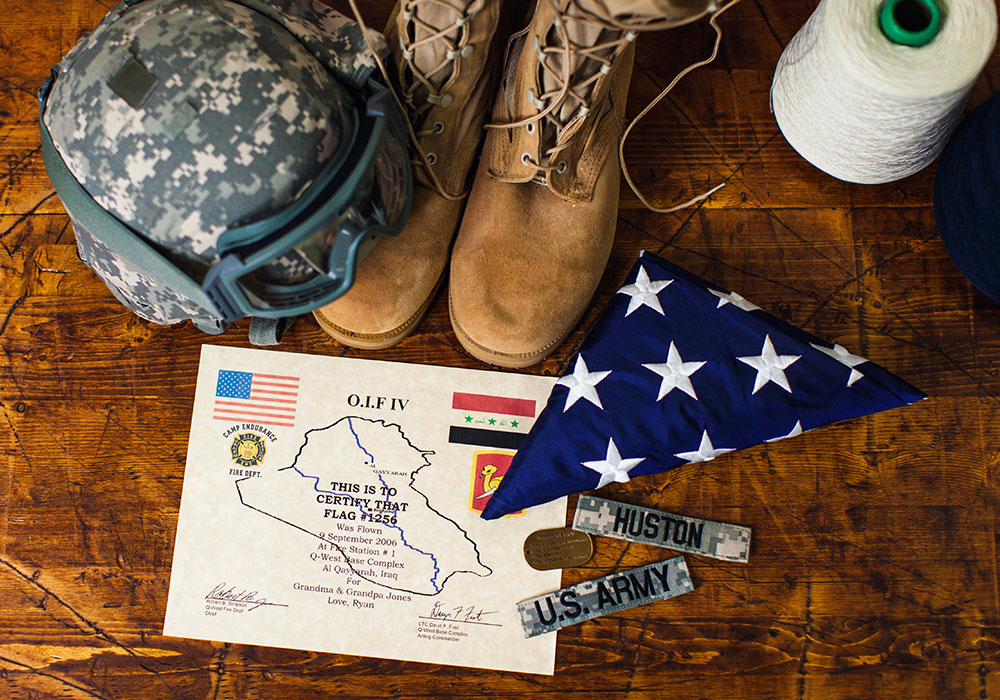
What are you most excited about in your business?
New partner/developing on modernization plan - Our goal is to have a digital duplicate of every model that we make. If our factory makes a physical sample, we want to have a digital duplicate so we can use it for color work, material work and beyond. Once you have that 3D asset, there’s so much you can do with it.
lighthouse in our past innovations, and prototypes of textile yardage and shaped products from regional producers/stewards – Nature/Man and machine demonstrating climate benefitting products and processes. ***Highlight Ryan’s skills and recognitions (via LEVIS grant – CB wool, PRI – Project relAted investments – pioneering on financial levers to address gaps -
-To pair with titans of industry in circular, additive, and innovative opportunities -
d. Illustrate towards new Innovations lab and collaborators along with new – fresher branding that represents across spectrums of consumer products and highlights alongside our industry partners.
What does HTC do notes –
Sample prototype production of unique, one of a kinds. Many people think 3d knitting is as easy as 3d printing – make a file, dump it into the printer and walk away for a few hours. But….that is not how knitting really works…This technology is a textile manufacturing format that precisely engineers yarns and fabric variations solely where they are needed.
For creating fabric structure and or functional variations for load or performance, which are mapped into the resulting products and components with a virtually seamless fit and nearly zero waste, there are so many variables in materials, machinery, machine set up feeding systems and even atmosphere of manufacturing and how materials are stored. A few examples include feed tension, yarn structure, Fiber Content, Stitch tension, Take down, material age and end uses.
7) So where do we start?
Huston Textile Company is uniquely positioned as a consulting firm that will focus on knitting and weaving as additive manufacturing.
We will be responsible for changing how consumers and clients think about their functional advances and products to market. We have a passion for creating first to market excellence. We do not build stand-alone prototypes. We build the infrastructure to create markets, transforming vision into tangible reality. We build manufacturing platforms where products are mass reproducible in a consistent, efficient, and repeatable platform.
We are always working to better design, create development strategy, engineer, and scale implementation of manufacturing platforms to build the functional performance demanded by specialty markets.
Our team and capabilities include textile engineers, product development experts, manufacturing engineers and machine performance experts.
As R&D and manufacturing strategy experts we help each client reach the right strategic answer for their particular vision and spell out the roadmap to take their vision from sky high back down to a earth driving reality.
As implementation specialists, we take that road map and execute, create proofs of concepts for our clients to test and explore. We do not sell machinery or materials, but we are functional specialists.
We modify machinery, mechanical parts, electronic parts, engineer materials, and new feed systems, to attain the precision demanded for the strict tolerances high-tech and haute goods.
As textile engineers, we build each project from the fibers (and polymers) up, from cross sections to fiber counts and performance characteristics of the materials and knitted structures to meet the specific functions of each part of our clients’ projects.
Most valuable of all – we are industry experts who bring a tremendous amount to the table – from extraordinary levels of expertise – intellectual property and material developments.
The start to our journey in finding a 1960's X3 Draper shuttle loom in need of some TLC - come join us in this exciting Draper salvage story that was community driven, producing a range of products over the past few years we want to catalogue and give truths to.
When we first came upon the idea of 'industrializing' our equipment, we knew Draper shuttle looms, of varying width had to be on our dream list. To find, restore, and maintain - has been a journey for the ages and continues to modern day operations.
Loom Specs and Dimensions
Reed collections for these traditional
Spare parts are tricky to come by, especially when they aren't manufactured anymore, nor are there any modern day supports. Through generous community wisdom on operating these machines, and lots of hours in heritage manuals, we've engineered ways through many technical challenges with these machines. To find spare parts - a bit like classic car collecting - find parts from here, there and sometimes manufacture it yourself.
